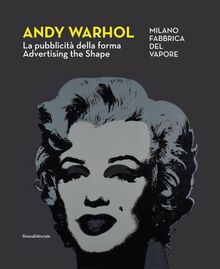ARTIST MONOGRAPHS
|
|
in stock $45.00 Free Shipping UPS GROUND IN THE CONTINENTAL U.S. |
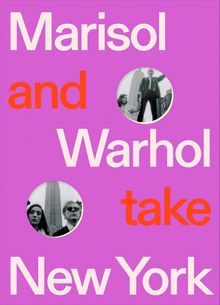 Marisol and Warhol Take New York
Marisol and Warhol Take New York
Published by The Andy Warhol Museum.
Edited by Jessica Beck. Text by Angie Cruz, Jeffrey Deitch, Eleanor Friedberger, Jennifer Josten, Franklin Sirmans.
This book charts the emergence of Marisol Escobar (1930–2016) and Andy Warhol (1928–87) in New York during the dawn of Pop art in the early 1960s. Through essays, interviews and prose, the book explores the artists’ parallel rise to success, the formation of their artistic personas, their savvy navigation of gallery relationships and the blossoming of their early artistic practices from 1960 to 1968. The exhibition features key loans of Marisol’s work from major global collections, along with iconic works and rarely seen films and archival materials from the Andy Warhol Museum’s collection. By situating Marisol's work in dialogue with Warhol’s, this new collection of writing seeks to reclaim the importance of her art; reframe the strength, originality and daring nature of her work; and reconsider her as one of the leading figures of the Pop era.
PUBLISHER
The Andy Warhol Museum
BOOK FORMAT
Hardcover, 7.75 x 10.5 in. / 120 pgs / 60 color.
PUBLISHING STATUS
Pub Date 12/21/2021
Active
DISTRIBUTION
D.A.P. Exclusive
Catalog: FALL 2021 p. 119
PRODUCT DETAILS
ISBN 9781735940212 TRADE
List Price: $45.00 CAD $61.50 GBP £32.00
AVAILABILITY
In stock
in stock $45.00 Free Shipping UPS GROUND IN THE CONTINENTAL U.S. |
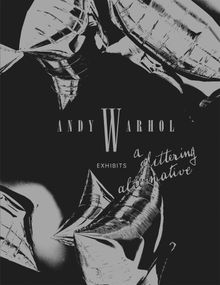 Andy Warhol: Exhibits
Andy Warhol: Exhibits
A Glittering Alternative
Published by Walther König, Köln.
Edited with text by Marianne Dobner. Text by Naoko Kaltschmidt, Natalie Musteata, Neil Printz, Nina Schleif, Jenniger Sichel. Interview with Gene Swenson.
Exhibition artist, installation artist or curator? Andy Warhol: Exhibits accomplishes a rich and original take on an oeuvre that has not lacked for critical scrutiny. It looks at rarely shown works that look behind the facade of the world-famous pop-art icon to rediscover Warhol’s innovations as an exhibition and installation artist, from the perspective of all that he has subsequently influenced in installation art and beyond.
The book includes Warhol’s famous 1963 ARTNEWS interview with Gene Swenson, which became a primary text of the pop-art movement. Encompassing both early and late works, and traversing all of the mediums in which he worked, Andy Warhol: Exhibits shows how the artist’s modes of presentation can be understood as an essential part of his oeuvre.
PUBLISHER
Walther König, Köln
BOOK FORMAT
Hardcover, 10.25 x 13 in. / 320 pgs / 350 color.
PUBLISHING STATUS
Pub Date 4/13/2021
Active
DISTRIBUTION
D.A.P. Exclusive
Catalog: SPRING 2021 p. 20
PRODUCT DETAILS
ISBN 9783960985402 FLAT40
List Price: $69.95 CAD $97.95
AVAILABILITY
In stock
in stock $69.95 Free Shipping UPS GROUND IN THE CONTINENTAL U.S. |
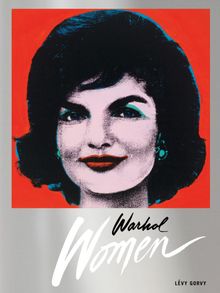 Warhol Women
Warhol Women
Published by Lévy Gorvy.
Text by Blake Gopnik, Lynne Tillman, Alison M. Gingeras. Interview with Corice Arman by Brett Gorvy. Poetry by John Giorno.
Dedicated to Andy Warhol's (1928–87) portraits of women from the early 1960s through the 1980s, and featuring five trifolds and a tipped-on cover, Warhol Women explores the artist's female subjects and his complex relationship to myths and ideals of femininity, beauty and power.
Here, Blake Gopnik discusses the women essential to Warhol during his emergence as an artist, while Lynne Tillman examines his relationship with his mother. Brett Gorvy's interview with Corice Arman relays her experience sitting for two portraits by Warhol, and John Giorno (the subject of Warhol's film Sleep) contributes the poem "La saggezza delle streghe/Wisdom of the Witches." Alison M. Gingeras writes on women that played vital roles throughout his career, from Ethel Scull and Edie Sedgwick to Brigid Berlin, Pat Hackett and others.
Also included are source images and Polaroids of the women in Warhol's portraits.
PUBLISHER
Lévy Gorvy
BOOK FORMAT
Hardcover, 10 x 13.25 in. / 192 pgs / 118 color / 41 bw.
PUBLISHING STATUS
Pub Date 12/5/2019
Active
DISTRIBUTION
D.A.P. Exclusive
Catalog: SPRING 2020 p. 116
PRODUCT DETAILS
ISBN 9781944379308 TRADE
List Price: $80.00 CAD $110.00 GBP £71.00
AVAILABILITY
In stock
in stock $80.00 Free Shipping UPS GROUND IN THE CONTINENTAL U.S. |
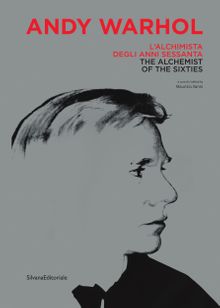 Andy Warhol: The Alchemist of the Sixties
Andy Warhol: The Alchemist of the Sixties
Published by Silvana Editoriale.
Edited by Maurizio Vanni.
It is difficult to overstate the influence that American artist and provocateur Andy Warhol (1928–87) has had on art and culture worldwide since he first premiered the 32 Campbell’s Soup Cans in 1962 at the Ferus Gallery in Los Angeles. As part of a burgeoning pop-art scene in New York in the early 1960s, Warhol painted the things and images of the ordinary world—“images that anybody walking down Broadway could recognize in a split second,” as he explained it. “Comics, picnic tables, men's trousers, celebrities, shower curtains, refrigerators, Coke bottles—all the great modern things.”
Warhol took these “great modern things” into the painter’s studio and, copying and painting them through the photo-silkscreen process, turned them into Warhols. Like an alchemist, Warhol transformed the base materials of reality into something new: into pop art, into transfigured commodities and into art historical icons.
Andy Warhol: The Alchemist of the Sixties focuses on this transformative power of Warhol’s work. The publication brings together more than 140 works by Warhol, including examples of some of his most well-known series, like the Jackies and the Marilyns. With a particular focus on Warhol’s engagement with consumerism, mythmaking, music and the sexual revolution of the 1960s, this volume retraces the creative universe of pop art’s most famous figure.
PUBLISHER
Silvana Editoriale
BOOK FORMAT
Hardcover, 6.75 x 9.5 in. / 336 pgs / 200 color.
PUBLISHING STATUS
Pub Date 10/22/2019
Active
DISTRIBUTION
D.A.P. Exclusive
Catalog: FALL 2019 p. 134
PRODUCT DETAILS
ISBN 9788836642335 TRADE
List Price: $50.00 CAD $69.95
AVAILABILITY
In stock
in stock $50.00 Free Shipping UPS GROUND IN THE CONTINENTAL U.S. |
 Andy Warhol's The Chelsea Girls
Andy Warhol's The Chelsea Girls
Published by D.A.P./The Andy Warhol Museum.
Edited with text by Geralyn Huxley, Greg Pierce. Foreword by Rajendra Roy. Essay by Gus Van Sant. Contributions by Patrick Moore, Signe Warner Watson.
Andy Warhol’s 1966 movie The Chelsea Girls is the iconic document of the Factory scene and 1960s New York. Filmed in part at the Chelsea Hotel with Factory Superstars like Nico, Ondine, Brigid Berlin, Gerard Malanga and Mary Woronov, The Chelsea Girls was Warhol’s first commercially successful film. “In one film alone,” an early reviewer noted, “[Warhol] has sadism, masochism, whipping, transvestites, homos, prostitutes, a homosexual ‘Pope,’ boredom, stunningly beautiful girls, depravity, humor, ‘psychedelics,’ truth, honesty, liars, poseurs....” In honor of the 24th anniversary of The Andy Warhol Museum, the publication of Andy Warhol’s The Chelsea Girls coincides with a major project undertaken by the museum to digitize hundreds of his well-known and never-before-seen films.
The book is an in-depth, deluxe treatment of the film, featuring stills from the newly digitized film, previously unpublished transcripts and archival materials, and expanded information about each of the individual films that comprise The Chelsea Girls. The film’s alternation of sound between the left and right screens is recalled in the publication’s design in which the transcripts are printed directly beneath the corresponding imagery to evoke an authentic experience of the film. Also included are previously unpublished transcriptions of unheard reels. Andy Warhol’s The Chelsea Girls is a beautifully produced document of a legendary movie and a mythic moment.
PUBLISHER
D.A.P./The Andy Warhol Museum
BOOK FORMAT
Hardcover, 9 x 12 in. / 328 pgs / illustrated throughout.
PUBLISHING STATUS
Pub Date 4/24/2018
Active
DISTRIBUTION
D.A.P. Exclusive
Catalog: SPRING 2018 p. 5
PRODUCT DETAILS
ISBN 9781942884187 TRADE
List Price: $65.00 CAD $87.00 GBP £55.00
AVAILABILITY
In stock
in stock $65.00 Free Shipping UPS GROUND IN THE CONTINENTAL U.S. |
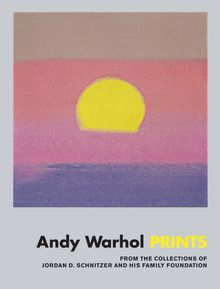 Andy Warhol: Prints
Andy Warhol: Prints
From the Collections of Jordan D. Schnitzer and his Family Foundation
Published by Jordan Schnitzer Family Foundation.
Edited by Carolyn Vaughn. Foreword by Brian Ferriso. Text by Sara Krajewski, Richard H. Axsom, Jordan D. Schnitzer.
Printmaking was a vital artistic practice for Warhol. Prints figure prominently throughout his career from his earliest work as a commercial illustrator in the 1950s to the collaborative silkscreens made in the Factory during the 1960s and the commissioned portfolios of his final years. In their fascination with popular culture and provocative subverting of the difference between original and copy, Warhol’s prints are recognized now as a prescient forerunner of today’s hyper-sophisticated, hyper-saturated and hyper-accelerated visual culture.
Andy Warhol: Prints, published to accompany a major exhibition at the Portland Art Museum—the largest of its kind ever to be presented—includes approximately 250 of Warhol’s prints and ephemera from the collection of Jordan D. Schnitzer, including iconic silkscreen prints of Campbell’s soup cans and Marilyn Monroe. Organized chronologically and by series, Andy Warhol: Prints establishes the range of Warhol’s innovative graphic production as it evolved over the course of four decades, with a particular focus on Warhol’s use of different printmaking techniques, beginning with illustrated books and ending with screen printing.
PUBLISHER
Jordan Schnitzer Family Foundation
BOOK FORMAT
Hardcover, 9.5 x 12.5 in. / 184 pgs / 280 color.
PUBLISHING STATUS
Pub Date 1/24/2017
Active
DISTRIBUTION
D.A.P. Exclusive
Catalog: SPRING 2017 p. 56
PRODUCT DETAILS
ISBN 9780692764473 TRADE
List Price: $55.00 CAD $72.50 GBP £45.00
AVAILABILITY
In stock
in stock $55.00 Free Shipping UPS GROUND IN THE CONTINENTAL U.S. |
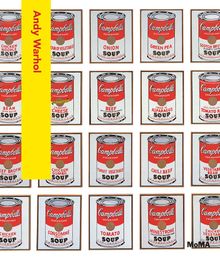 Andy Warhol
Andy Warhol
Published by The Museum of Modern Art, New York.
By Carolyn Lanchner.
Through his art, ideas and style, Andy Warhol made an indelible mark on the history of modern art and on popular culture. This book features ten paintings by Warhol selected from The Museum of Modern Art’s collection of his work. His famous Gold Marilyn Monroe and Campbell’s Soup Cans are here, along with other equally groundbreaking and iconic silkscreen paintings—from his early work of 1961 to The Last Supper, a painting in progress at the time of his death, in 1987. An insightful essay by Carolyn Lanchner, a former curator of painting and sculpture at the Museum, accompanies each work, illuminating its significance and placing it in its historical moment in the development of modern art and in the artist's own life.
PUBLISHER
The Museum of Modern Art, New York
BOOK FORMAT
Hardcover, 9 x 10.5 in. / 56 pgs / 39 color.
PUBLISHING STATUS
Pub Date 10/24/2017
Active
DISTRIBUTION
D.A.P. Exclusive
Catalog: FALL 2017 p. 130
PRODUCT DETAILS
ISBN 9781633450448 TRADE
List Price: $19.95 CAD $27.95
AVAILABILITY
Out of stock
STATUS: Out of stock Temporarily out of stock pending additional inventory. |
 13 Most Wanted Men: Andy Warhol and the 1964 World's Fair
13 Most Wanted Men: Andy Warhol and the 1964 World's Fair
Conversations
Published by Queens Museum/The Andy Warhol museum.
Edited by Larissa Harris, Media Farzin. Text by Hilary Ballon, Nicholas Chambers, Douglas Crimp, Diane di Prima, Dick Elman, Tom Finkelpearl, Albert Fisher, Brian L. Frye, John Giorno, Anthony Grudin, Larissa Harris, Felicia Kornbluh, Gerard Malanga, Jonas Mekas, Timothy Mennel, Richard Meyer, Billy Name, Brian Purnell, Anastasia Rygle, Eric Shiner, Richard Norton Smith, Lori Walters, Mark Wigley.
PUBLISHER
Queens Museum/The Andy Warhol museum
BOOK FORMAT
Paperback, 7.5 x 9.25 in. / 152 pgs / 13 color / 84 bw.
PUBLISHING STATUS
Pub Date 2/24/2015
Out of stock indefinitely
DISTRIBUTION
D.A.P. Exclusive
Catalog: SPRING 2015 p. 127
PRODUCT DETAILS
ISBN 9781929641192 TRADE
List Price: $35.00 CAD $47.50 GBP £30.00
AVAILABILITY
Not available
STATUS: Out of stock indefinitely. |
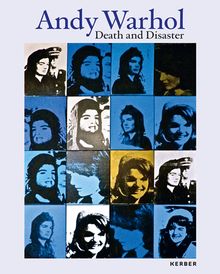 Andy Warhol: Death and Disaster
Andy Warhol: Death and Disaster
Published by Kerber.
PUBLISHER
Kerber
BOOK FORMAT
Hardcover, 9.5 x 11.75 in. / 144 pgs / 89 color / 32 bw.
PUBLISHING STATUS
Pub Date 3/24/2015
Active
DISTRIBUTION
D.A.P. Exclusive
Catalog: SPRING 2015 p. 127
PRODUCT DETAILS
ISBN 9783735600462 TRADE
List Price: $55.00 CAD $72.50
AVAILABILITY
Out of stock
STATUS: Out of stock Temporarily out of stock pending additional inventory. |
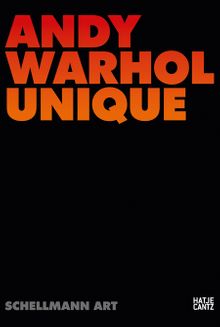 Andy Warhol: Unique
Andy Warhol: Unique
Published by Hatje Cantz.
Text by Jörg Schellmann.
PUBLISHER
Hatje Cantz
BOOK FORMAT
Paperback, 9.75 x 11.75 in. / 172 pgs / 250 color.
PUBLISHING STATUS
Pub Date 11/30/2014
Active
DISTRIBUTION
D.A.P. Exclusive
Catalog: SPRING 2014 p. 111
PRODUCT DETAILS
ISBN 9783775737166 TRADE
List Price: $60.00 CAD $79.00
AVAILABILITY
Out of stock
STATUS: Out of stock Temporarily out of stock pending additional inventory. |
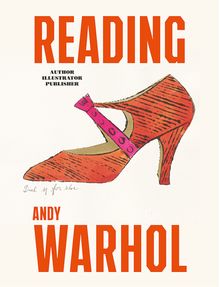 Reading Andy Warhol
Reading Andy Warhol
Author Illustrator Publisher
Published by Hatje Cantz.
Edited by Nina Schleif. Text by Marianne Dobner, Burcu Dogramaci, Simone Förster, Birgitta Heid, Lucy Mulroney, Susan M. Rossi-Wilcox, Anna Rühl, Nina Schleif, Jordan Troeller, Reva Wolf, Matt Wrbican.
PUBLISHER
Hatje Cantz
BOOK FORMAT
Hardcover, 8.75 x 11.25 in. / 304 pgs / 300 color.
PUBLISHING STATUS
Pub Date 2/28/2014
Active
DISTRIBUTION
D.A.P. Exclusive
Catalog: SPRING 2014 p. 66
PRODUCT DETAILS
ISBN 9783775737074 TRADE
List Price: $60.00 CAD $79.00
AVAILABILITY
In stock
in stock $60.00 Free Shipping UPS GROUND IN THE CONTINENTAL U.S. |
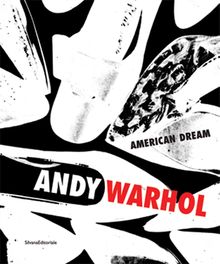 Andy Warhol: The American Dream
Andy Warhol: The American Dream
Published by Silvana Editoriale.
Edited by Achille Bonito Oliva. Introduction by Francesca Franco.
PUBLISHER
BOOK FORMAT
Paperback, 9.5 x 11 in. / 284 pgs / 150 color.
PUBLISHING STATUS
Pub Date 6/30/2014
Out of print
DISTRIBUTION
D.A.P. Exclusive
Catalog: SPRING 2014 p. 110
PRODUCT DETAILS
ISBN 9788836626762 TRADE
List Price: $50.00 CAD $60.00
AVAILABILITY
Not available
STATUS: Out of print | 00/00/00 For assistance locating a copy, please see our list of recommended out of print specialists |
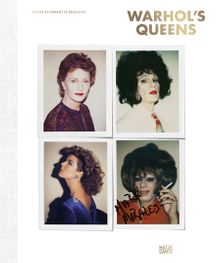 Warhol's Queens
Warhol's Queens
Published by Hatje Cantz.
Edited by Henriette Dedichen.
PUBLISHER
Hatje Cantz
BOOK FORMAT
Hardcover, 10 x 12 in. / 176 pgs / 170 color.
PUBLISHING STATUS
Pub Date 9/30/2013
Active
DISTRIBUTION
D.A.P. Exclusive
Catalog: FALL 2013 p. 92
PRODUCT DETAILS
ISBN 9783775735452 TRADE
List Price: $30.00 CAD $40.00
AVAILABILITY
Out of stock
STATUS: Out of stock Temporarily out of stock pending additional inventory. |
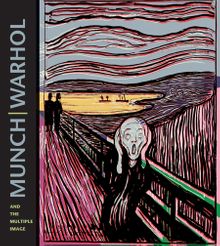 Munch|Warhol and the Multiple Image
Munch|Warhol and the Multiple Image
Published by The American-Scandinavian Foundation.
Edited by Pari Stave. Text by Patricia G. Berman. Foreword by Edward P. Gallagher.
PUBLISHER
The American-Scandinavian Foundation
BOOK FORMAT
Hardcover, 11 x 10 in. / 88 pgs / 75 color / 5 bw.
PUBLISHING STATUS
Pub Date 5/31/2013
Out of print
DISTRIBUTION
D.A.P. Exclusive
Catalog: SPRING 2013 p. 124
PRODUCT DETAILS
ISBN 9780971949386 TRADE
List Price: $45.00 CAD $55.00
AVAILABILITY
Not available
STATUS: Out of print | 00/00/00 For assistance locating a copy, please see our list of recommended out of print specialists |
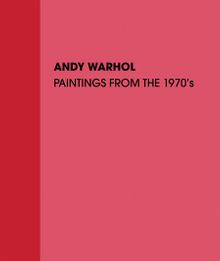 Andy Warhol: Paintings from the 1970s
Andy Warhol: Paintings from the 1970s
Published by Skarsdedt.
Text by Trevor Fairbrother.
PUBLISHER
Skarsdedt
BOOK FORMAT
Clth, 9 x 10 in. / 60 pgs / 35 color / 3 bw.
PUBLISHING STATUS
Pub Date 8/31/2012
Out of print
DISTRIBUTION
D.A.P. Exclusive
Catalog: FALL 2012 p. 104
PRODUCT DETAILS
ISBN 9781616237233 TRADE
List Price: $30.00 CAD $35.00
AVAILABILITY
Not available
STATUS: Out of print | 00/00/00 For assistance locating a copy, please see our list of recommended out of print specialists |
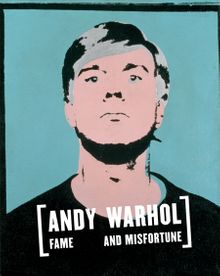 Andy Warhol: Fame and Misfortune
Andy Warhol: Fame and Misfortune
Published by McNay Art Museum.
Introduction by René Paul Barilleaux. Text by Justin Spring.
PUBLISHER
McNay Art Museum
BOOK FORMAT
Hardcover, 11 x 13 in. / 80 pgs / 80 color.
PUBLISHING STATUS
Pub Date 3/31/2012
Out of stock indefinitely
DISTRIBUTION
D.A.P. Exclusive
Catalog: SPRING 2012 p. 143
PRODUCT DETAILS
ISBN 9780916677572 TRADE
List Price: $29.95 CAD $39.95 GBP £27.00
AVAILABILITY
Not available
STATUS: Out of stock indefinitely. |
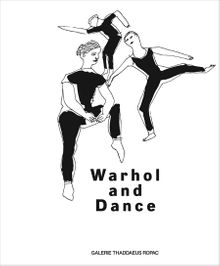 Warhol and Dance
Warhol and Dance
Published by Galerie Thaddaeus Ropac.
Edited by Alessandra Bellavita, Bénédicte Burrus, Jill van Coenegrachts.
PUBLISHER
Galerie Thaddaeus Ropac
BOOK FORMAT
Paperback, 8.75 x 10.75 in. / 128 pgs / 75 bw.
PUBLISHING STATUS
Pub Date 1/31/2012
Out of stock indefinitely
DISTRIBUTION
D.A.P. Exclusive
Catalog: SPRING 2011 p. 76
PRODUCT DETAILS
ISBN 9782910055424 TRADE
List Price: $40.00 CAD $54.00
AVAILABILITY
Not available
STATUS: Out of stock indefinitely. |
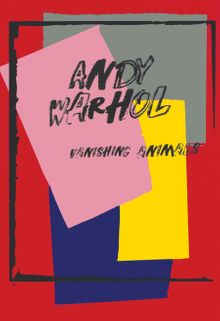 Andy Warhol: Vanishing Animals
Andy Warhol: Vanishing Animals
Published by Lococo Fine Art Publisher.
PUBLISHER
Lococo Fine Art Publisher
BOOK FORMAT
Paperback, 8 x 12 in. / 52 pgs / 37 color / 1 bw.
PUBLISHING STATUS
Pub Date 3/31/2011
Out of print
DISTRIBUTION
D.A.P. Exclusive
Catalog: SPRING 2011 p. 76
PRODUCT DETAILS
ISBN 9780971069220 TRADE
List Price: $20.00 CAD $25.00
AVAILABILITY
Not available
STATUS: Out of print | 00/00/00 For assistance locating a copy, please see our list of recommended out of print specialists |
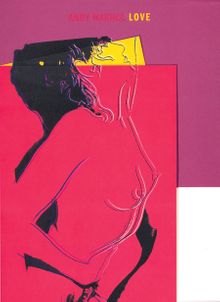 Andy Warhol: Love
Andy Warhol: Love
Published by Lococo Fine Art Publisher.
Interview with Vincent Freemont.
PUBLISHER
Lococo Fine Art Publisher
BOOK FORMAT
Paperback, 9 x 12 in. / 66 pgs / 18 color / 6 bw.
PUBLISHING STATUS
Pub Date 3/31/2011
Out of print
DISTRIBUTION
D.A.P. Exclusive
Catalog: SPRING 2011 p. 76
PRODUCT DETAILS
ISBN 9780971069251 TRADE
List Price: $25.00 CAD $30.00
AVAILABILITY
Not available
STATUS: Out of print | 00/00/00 For assistance locating a copy, please see our list of recommended out of print specialists |
 Andy Warhol: Man's Best Friend
Andy Warhol: Man's Best Friend
Published by Lococo Fine Art Publisher.
Text by Vincent Freemont.
PUBLISHER
Lococo Fine Art Publisher
BOOK FORMAT
Paperback, 8 x 10 in. / 60 pgs / 8 color / 5 bw.
PUBLISHING STATUS
Pub Date 3/31/2011
Out of print
DISTRIBUTION
D.A.P. Exclusive
Catalog: SPRING 2011 p. 76
PRODUCT DETAILS
ISBN 9780971069237 TRADE
List Price: $20.00 CAD $25.00
AVAILABILITY
Not available
STATUS: Out of print | 00/00/00 For assistance locating a copy, please see our list of recommended out of print specialists |
 Cars: Andy Warhol, Sylvie Fleury, Robert Longo, Vincent Szarek
Cars: Andy Warhol, Sylvie Fleury, Robert Longo, Vincent Szarek
From the Daimler Art Collection
Published by Hatje Cantz.
Edited by Renate Wiehager.
PUBLISHER
Hatje Cantz
BOOK FORMAT
Hardcover, 9.75 x 11.25 in. / 248 pgs / 134 color.
PUBLISHING STATUS
Pub Date 8/31/2010
Out of print
DISTRIBUTION
D.A.P. Exclusive
Catalog: FALL 2010 p. 145
PRODUCT DETAILS
ISBN 9783775725828 TRADE
List Price: $60.00 CAD $70.00
AVAILABILITY
Not available
STATUS: Out of print | 00/00/00 For assistance locating a copy, please see our list of recommended out of print specialists |
 Andy Warhol: The Early Sixties
Andy Warhol: The Early Sixties
Paintings and Drawings 1961-1964
Published by Hatje Cantz.
Edited by Bernhard Mendes Bürgi, Nina Zimmer. Text by Sebastian Egenhofer, Georg Frei.
PUBLISHER
Hatje Cantz
BOOK FORMAT
Hardcover, 9.75 x 12 in. / 244 pgs / 120 color / 100 bw.
PUBLISHING STATUS
Pub Date 11/30/2010
Out of print
DISTRIBUTION
D.A.P. Exclusive
Catalog: FALL 2010 p. 93
PRODUCT DETAILS
ISBN 9783775726511 TRADE
List Price: $60.00 CAD $70.00
AVAILABILITY
Not available
STATUS: Out of print | 00/00/00 For assistance locating a copy, please see our list of recommended out of print specialists |
 Andy Warhol Enterprises
Andy Warhol Enterprises
Published by Hatje Cantz.
Text by Thomas Crow, Vincent Fremont, Sarah Green, Allison Unruh.
PUBLISHER
Hatje Cantz
BOOK FORMAT
Hardcover, 8.25 x 11.5 in. / 160 pgs / 80 color.
PUBLISHING STATUS
Pub Date 11/30/2010
Out of print
DISTRIBUTION
D.A.P. Exclusive
Catalog: FALL 2010 p. 92
PRODUCT DETAILS
ISBN 9783775726764 TRADE
List Price: $55.00 CAD $65.00
AVAILABILITY
Not available
STATUS: Out of print | 00/00/00 For assistance locating a copy, please see our list of recommended out of print specialists |
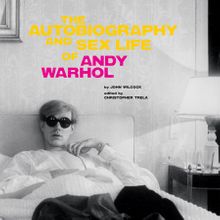 The Autobiography and Sex Life of Andy Warhol
The Autobiography and Sex Life of Andy Warhol
Published by Trela Media.
By John Wilcock. Edited by Christopher Trela. Photographs by Shunk-Kender.
PUBLISHER
Trela Media
BOOK FORMAT
Hardcover, 9.75 x 9.75 in. / 256 pgs / 22 color / 84 duotone.
PUBLISHING STATUS
Pub Date 6/30/2010
Out of print
DISTRIBUTION
D.A.P. Exclusive
Catalog: SPRING 2010 p. 171
PRODUCT DETAILS
ISBN 9780970612618 TRADE
List Price: $45.00 CAD $55.00
AVAILABILITY
Not available
STATUS: Out of print | 00/00/00 For assistance locating a copy, please see our list of recommended out of print specialists |
 Andy Warhol: Still Lifes and Feet 1956-1961
Andy Warhol: Still Lifes and Feet 1956-1961
Published by Paul Kasmin Gallery.
PUBLISHER
Paul Kasmin Gallery
BOOK FORMAT
Paperback, 8 x 10 in. / 72 pgs / 58 color.
PUBLISHING STATUS
Pub Date 4/30/2010
Out of print
DISTRIBUTION
D.A.P. Exclusive
Catalog: FALL 2010 p. 92
PRODUCT DETAILS
ISBN 9780979416484 TRADE
List Price: $25.00 CAD $30.00
AVAILABILITY
Not available
STATUS: Out of print | 00/00/00 For assistance locating a copy, please see our list of recommended out of print specialists |
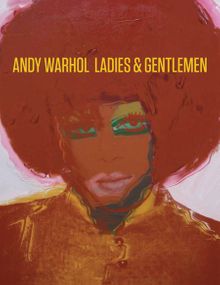 Andy Warhol: Ladies and Gentlemen
Andy Warhol: Ladies and Gentlemen
Published by Skarsdedt.
Text by Pier Paolo Pasolini.
PUBLISHER
Skarsdedt
BOOK FORMAT
Hardcover, 8.5 x 11 in. / 80 pgs / 40 color / 3 bw.
PUBLISHING STATUS
Pub Date 5/31/2010
Out of print
DISTRIBUTION
D.A.P. Exclusive
Catalog: FALL 2010 p. 92
PRODUCT DETAILS
ISBN 9781616237172 TRADE
List Price: $30.00 CAD $35.00
AVAILABILITY
Not available
STATUS: Out of print | 00/00/00 For assistance locating a copy, please see our list of recommended out of print specialists |
 Warhol After Munch
Warhol After Munch
Published by Louisiana Museum of Modern Art.
Text by Siegfried Gohr, Gunnar Danbolt, Henriette Dedichen, Poul Erik Tøjner.
PUBLISHER
Louisiana Museum of Modern Art
BOOK FORMAT
Hardcover, 12 x 10.5 in. / 128 pgs / 40 color.
PUBLISHING STATUS
Pub Date 9/30/2010
Out of stock indefinitely
DISTRIBUTION
D.A.P. Exclusive
Catalog: FALL 2010 p. 92
PRODUCT DETAILS
ISBN 9788791607790 TRADE
List Price: $35.00 CAD $47.50 GBP £30.00
AVAILABILITY
Not available
STATUS: Out of stock indefinitely. |
 Andy Warhol: Strange World
Andy Warhol: Strange World
Drawings 1948-1959
Published by Paul Kasmin Gallery.
Text by Todd Alden.
PUBLISHER
Paul Kasmin Gallery
BOOK FORMAT
Paperback, 9.5 x 11.5 in. / 78 pgs / 68 color.
PUBLISHING STATUS
Pub Date 2/1/2009
Active
DISTRIBUTION
D.A.P. Exclusive
Catalog: SPRING 2009 p. 103
PRODUCT DETAILS
ISBN 9780979416439 TRADE
List Price: $40.00 CAD $54.00 GBP £35.00
AVAILABILITY
Out of stock
STATUS: Out of stock Temporarily out of stock pending additional inventory. |
 Andy Warhol
Andy Warhol
Published by The Museum of Modern Art, New York.
Text by Carolyn Lanchner.
PUBLISHER
The Museum of Modern Art, New York
BOOK FORMAT
Paperback, 6 x 8 in. / 48 pgs / 30 color.
PUBLISHING STATUS
Pub Date 6/1/2008
Active
DISTRIBUTION
D.A.P. Exclusive
Catalog: SPRING 2008 p. 69
PRODUCT DETAILS
ISBN 9780870707261 TRADE
List Price: $9.95 CAD $14.95
AVAILABILITY
Out of stock
STATUS: Out of stock Temporarily out of stock pending additional inventory. |
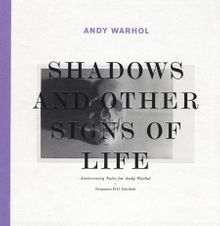 Andy Warhol: Shadows and Other Signs of Life
Andy Warhol: Shadows and Other Signs of Life
Anniversary Notes for Andy Warhol
Published by Walther König, Köln.
Text by Benjamin H.D. Buchloh.
PUBLISHER
Walther König, Köln
BOOK FORMAT
Hardback, 11.75 x 11.75 in. / 120 pgs / 36 color / 67 bw.
PUBLISHING STATUS
Pub Date 6/1/2008
Out of print
DISTRIBUTION
D.A.P. Exclusive
Catalog: FALL 2008 p. 82
PRODUCT DETAILS
ISBN 9783865603845 TRADE
List Price: $69.95 CAD $85.00
AVAILABILITY
Not available
STATUS: Out of print | 00/00/00 For assistance locating a copy, please see our list of recommended out of print specialists |
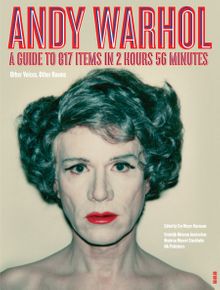 Andy Warhol: Other Voices, Other Rooms
Andy Warhol: Other Voices, Other Rooms
A Guide to 817 Items in 2 Hours 56 Minutes
Published by nai010 publishers.
Edited by Eva Meyer-Hermann. Text by Eva Meyer-Hermann, Matt Wrbican, Geralyn Huxley, Greg Pierce, Hal Foster.
PUBLISHER
nai010 publishers
BOOK FORMAT
Paperback, 8 x 10.5 in. / 176 pgs / 135 color / 160 bw.
PUBLISHING STATUS
Pub Date 3/1/2008
Out of print
DISTRIBUTION
D.A.P. Exclusive
Catalog: SPRING 2008 p. 6
PRODUCT DETAILS
ISBN 9789056626020 TRADE
List Price: $49.95 CAD $60.00
AVAILABILITY
Not available
STATUS: Out of print | 00/00/00 For assistance locating a copy, please see our list of recommended out of print specialists |
 Jim Hodges & Andy Warhol: I Remember Heaven
Jim Hodges & Andy Warhol: I Remember Heaven
Published by Contemporary Art Museum St. Louis.
Foreword by Paul Ha. Edited and with an introduction by Susan Cahan. Text by Susan Cahan, José Muñoz.
PUBLISHER
Contemporary Art Museum St. Louis
BOOK FORMAT
Hardback, 9 x 12 in. / 112 pgs / 84 color.
PUBLISHING STATUS
Pub Date 4/1/2007
Out of stock indefinitely
DISTRIBUTION
D.A.P. Exclusive
Catalog: SPRING 2007 p. 143
PRODUCT DETAILS
ISBN 9780977752829 TRADE
List Price: $35.00 CAD $47.50 GBP £30.00
AVAILABILITY
Not available
STATUS: Out of stock indefinitely. |
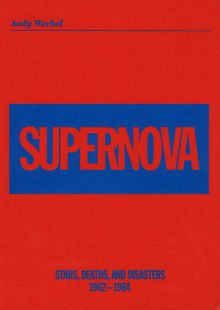 Andy Warhol: Supernova
Andy Warhol: Supernova
Stars, Deaths and Disasters 1962-1964
Published by Walker Art Center.
Edited by Douglas Fogle. Essays by Francesco Bonami, Douglas Fogle and David Moos.
PUBLISHER
Walker Art Center
BOOK FORMAT
Hardcover, 9.75 x 13 in. / 112 pgs / 72 color.
PUBLISHING STATUS
Pub Date 11/15/2005
Out of stock indefinitely
DISTRIBUTION
D.A.P. Exclusive
Catalog: SPRING 2006 p. 100
PRODUCT DETAILS
ISBN 9780935640830 TRADE
List Price: $39.95 CAD $53.95 GBP £35.00
AVAILABILITY
Not available
STATUS: Out of stock indefinitely. |
 Andy Warhol: Motion Pictures
Andy Warhol: Motion Pictures
Published by KW Institute for Contemporary Art.
Essays by Callie Angel, Mary Lea Bandy, Klaus Biesenbach, Laurence Kardish and Wayne Koestenbaum. Forewords by Glenn D. Lowry and Tom Sokolowski.
PUBLISHER
KW Institute for Contemporary Art
BOOK FORMAT
Hardcover, 12 x 9.5 in. / 266 pgs / 210 duotone.
PUBLISHING STATUS
Pub Date 3/15/2005
Out of stock indefinitely
DISTRIBUTION
D.A.P. Exclusive
Catalog: SPRING 2005 p. 6
PRODUCT DETAILS
ISBN 9783980426541 TRADE
List Price: $35.00 CAD $47.50 GBP £30.00
AVAILABILITY
Not available
STATUS: Out of stock indefinitely. |
Andy Warhol: Time Capsule 21
Published by DuMont.
Essays by John W. Smith, Mario Kramer and Matt Wrbican. Introduction by Thomas Sokolowski and Udo Kittelmann.
PUBLISHER
DuMont
BOOK FORMAT
Hardcover, 8.25 x 11.5 in. / 304 pgs / 200 color / 100 bw
PUBLISHING STATUS
Pub Date 2/2/2004
Out of print
DISTRIBUTION
D.A.P. Exclusive
Catalog: SPRING 2004
PRODUCT DETAILS
ISBN 9783832173838 TRADE
List Price: $35.00 CAD $40.00
AVAILABILITY
Not available
STATUS: Out of print | 12/1/2010 For assistance locating a copy, please see our list of recommended out of print specialists |
Andy Warhol: Self-Portraits
Published by Hatje Cantz.
Edited by Dietmar Elger. Essays by Robert Rosenblum and Roland Wäspe.
PUBLISHER
Hatje Cantz
BOOK FORMAT
Hardcover, 10 x 10 in. / 120 pgs / 60 color / 20 bw.
PUBLISHING STATUS
Pub Date 7/2/2004
Out of print
DISTRIBUTION
D.A.P. Exclusive
Catalog: SPRING 2004
PRODUCT DETAILS
ISBN 9783775713900 TRADE
List Price: $25.00 CAD $30.00
AVAILABILITY
Not available
STATUS: Out of print | 8/1/2007 For assistance locating a copy, please see our list of recommended out of print specialists |
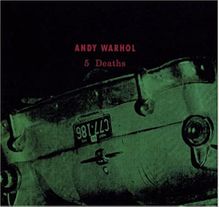 Andy Warhol: 5 Deaths
Andy Warhol: 5 Deaths
Published by Stellan Holm Gallery.
Introduction by Gerard Malanga. Conversation with Jeff Koons.
Within Warhol's Death and Disaster series, the so-called Car Crashes comprise the most numerous and diverse set of images. As Gerard Malanga writes in his accompanying essay, “We would return to this silkscreen again and again for several months; in effect, the first painting repeated many times over, this initiating Andy's serial imagery on separate identically shaped canvases, and anticipating the Flower paintings to come.” The book also includes a contemporary interview between Malanga and Jeff Koons as well as a reprint of an interview between Malanga and Warhol from 1963.
PUBLISHER
Stellan Holm Gallery
BOOK FORMAT
Hardcover, 10 x 10 in. / 61 pgs / 20 color / 10 bw.
PUBLISHING STATUS
Pub Date 3/2/2004
Out of stock indefinitely
DISTRIBUTION
D.A.P. Exclusive
Catalog: SPRING 2004
PRODUCT DETAILS
ISBN 9780971168718 TRADE
List Price: $45.00 CAD $60.00 GBP £40.00
AVAILABILITY
Not available
STATUS: Out of stock indefinitely. |
Andy Warhol: Campbell's Soup Boxes
Published by Galerie Thaddaeus Ropac.
Essay by Itzhak Goldberg.
PUBLISHER
Galerie Thaddaeus Ropac
BOOK FORMAT
Hardcover, 9.5 x 11.75 in. / 120 pgs / 38 color / 27 bw
PUBLISHING STATUS
Pub Date 4/2/2003
Out of print
DISTRIBUTION
D.A.P. Exclusive
Catalog: FALL 2001
PRODUCT DETAILS
ISBN 9783901935084 TRADE
List Price: $45.00 CAD $55.00
AVAILABILITY
Not available
STATUS: Out of print | 12/19/2005 For assistance locating a copy, please see our list of recommended out of print specialists |
 Andy Warhol: Prints
Andy Warhol: Prints
A Catalogue Raisonné 1962–1987
Published by D.A.P..
Andy Warhol: Prints, in its fourth edition, with corrections, is the definitive scholarly reference source for collectors, auction houses, libraries, curators, academics and art dealers. Andy Warhol spent his career working so prodigiously as to assure long-lasting renown. In the printmaking field alone, his output was prolific, and his appropriation of silkscreen as a fine-art medium forever altered the way prints look. This thoroughly revised and expanded fourth edition of Andy Warhol Prints: A Catalogue Raisonne 1962–1987 traces Warhol's complete graphic oeuvre from his first unique works on paper in 1962 through his final published portfolio in 1987.
More than 1,700 works are illustrated, an increase of 500 from the previous edition of the catalogue raisonné, and complete documentation is provided for each. New additions include a section focusing on Warhol's popular portraits, with documentation of prints that were related to paintings commissioned during the 1970s and 1980s, and a new supplement featuring prints and illustrated books from the 1950s, including the beloved 25 Cats Named Sam and One Blue Pussy.
An essay by Donna De Salvo addresses Warhol's self-published books and portfolios from the same era. An extensive chronology of printmaking activity, a complete exhibition history, a selected bibliography and a greatly expanded appendix to published prints complete the book.
PUBLISHER
D.A.P.
BOOK FORMAT
Clth, 9.75 x 11.75 in. / 400 pgs / 1500 color / 20 bw.
PUBLISHING STATUS
Pub Date 4/1/2003
Active
DISTRIBUTION
D.A.P. Exclusive
Catalog: SPRING 2003 p. 100
PRODUCT DETAILS
ISBN 9781891024634 TRADE
List Price: $95.00 CAD $112.50 GBP £85.00
AVAILABILITY
Out of stock
STATUS: Out of stock Temporarily out of stock pending additional inventory. |
Andy Warhol: Piss & Sex Paintings And Drawings
Published by Gagosian Gallery.
Essay by Bruce Hainley.
PUBLISHER
Gagosian Gallery
BOOK FORMAT
Paperback, 9.25 x 10.5 in. / 100 pgs / 92 color
PUBLISHING STATUS
Pub Date 3/2/2003
No longer our product
DISTRIBUTION
D.A.P. Exclusive
Catalog: FALL 2003
PRODUCT DETAILS
ISBN 9781880154823 TRADE
List Price: $50.00 CAD $60.00
AVAILABILITY
Not available
Andy Warhol: Cars
Business Art
Published by Hatje Cantz.
Artwork by Andy Warhol. Edited by Renate Wiehager. Text by Christian Gögger.
PUBLISHER
Hatje Cantz
BOOK FORMAT
Hardcover, 11.75 x 11.75 in. / 152 pgs / 67 color
PUBLISHING STATUS
Pub Date 3/2/2003
Out of print
DISTRIBUTION
D.A.P. Exclusive
Catalog: SPRING 2003
PRODUCT DETAILS
ISBN 9783775712644 TRADE
List Price: $39.95 CAD $50.00
AVAILABILITY
Not available
STATUS: Out of print | 12/19/2005 For assistance locating a copy, please see our list of recommended out of print specialists |
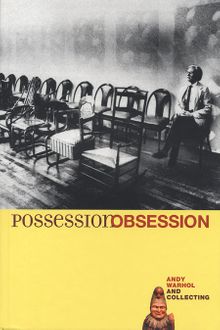 Possession Obsession: Andy Warhol And Collecting
Possession Obsession: Andy Warhol And Collecting
Published by The Andy Warhol Museum.
Edited by John W. Smith. Essays by Pamela Allara, Kenneth Arnes, Frederick Brandt, Sascha Chermayeff, Ralph Coe, Jonathan Flatley, Allen Kurzweil, Michael Lobel, Alexandra Rhodes & Stephano Papi, Thomas Sokolowski, Patti Smith Matthew Tinkcom and Pilar Viladas.
PUBLISHER
The Andy Warhol Museum
BOOK FORMAT
Hardcover, 8 x 12 in. / 152 pgs / 100 color / 20 bw.
PUBLISHING STATUS
Pub Date 8/2/2002
No longer our product
DISTRIBUTION
D.A.P. Exclusive
Catalog: SPRING 2002
PRODUCT DETAILS
ISBN 9780971568808 TRADE
List Price: $39.95 CAD $50.00
AVAILABILITY
Not available
Andy Warhol: Series And Singles
Published by Hatje Cantz.
Essay by Georg Frei.
PUBLISHER
Hatje Cantz
BOOK FORMAT
Paperback, 9.75 x 12.25 in. / 172 pgs / 109 color.
PUBLISHING STATUS
Pub Date 2/2/2002
Out of print
DISTRIBUTION
D.A.P. Exclusive
Catalog: SPRING 2002
PRODUCT DETAILS
ISBN 9783775711630 TRADE
List Price: $29.95 CAD $35.00
AVAILABILITY
Not available
STATUS: Out of print | 12/11/2007 For assistance locating a copy, please see our list of recommended out of print specialists |
 Andy Warhol: Little Electric Chair Paintings
Andy Warhol: Little Electric Chair Paintings
Published by Stellan Holm Gallery.
Essays by Peter Halley, Gerard Malanga.
PUBLISHER
Stellan Holm Gallery
BOOK FORMAT
Hardcover, 9.75 x 10.5 in. / 45 pgs / 26 color / 4 bw
PUBLISHING STATUS
Pub Date 2/2/2002
No longer our product
DISTRIBUTION
D.A.P. Exclusive
Catalog: SPRING 2002
PRODUCT DETAILS
ISBN 9780971168701 TRADE
List Price: $45.00 CAD $55.00
AVAILABILITY
 Andy Warhol and his World
Andy Warhol and his World
Published by Louisiana Museum of Modern Art.
Edited by Lise Kaiser. Essays by Steingrim Laursen, Katrine Molstrom.
PUBLISHER
Louisiana Museum of Modern Art
BOOK FORMAT
Paperback, 8 x 10 in. / 87 pgs / 59 color / 16 bw / 5 duotone.
PUBLISHING STATUS
Pub Date 1/2/2001
Out of print
DISTRIBUTION
D.A.P. Exclusive
Catalog: SPRING 2001
PRODUCT DETAILS
ISBN 9788790029487 TRADE
List Price: $20.00 CAD $25.00
AVAILABILITY
Not available
STATUS: Out of print | 11/28/2010 For assistance locating a copy, please see our list of recommended out of print specialists |
Andy Warhol: Drawings And Illustrations Of The 1950'S
Published by D.A.P./Distributed Art Publishers.
Artwork by Andy Warhol. Edited by Ivan Vartanian.
PUBLISHER
D.A.P./Distributed Art Publishers
BOOK FORMAT
Hardcover, 6 x 12 in. / 112 pgs / 85 color / 20 bw.
PUBLISHING STATUS
Pub Date 10/2/2000
Out of print
DISTRIBUTION
D.A.P. Exclusive
Catalog: FALL 2000
PRODUCT DETAILS
ISBN 9784771304123 TRADE
List Price: $9.95 CAD $12.50
AVAILABILITY
Not available
STATUS: Out of print | 11/28/2010 For assistance locating a copy, please see our list of recommended out of print specialists |
Andy Warhol: The Last Supper
Published by Cantz.
Artwork by Andy Warhol. Contributions by Corinna Thierolf, Carla Schulz-Hoffmann.
PUBLISHER
Cantz
BOOK FORMAT
Hardcover, 11.8 x 11 in. / 148 pgs / 80 color / 40 bw
PUBLISHING STATUS
Pub Date 7/2/1998
Out of print
DISTRIBUTION
D.A.P. Exclusive
Catalog: FALL 1998
PRODUCT DETAILS
ISBN 9783893229536 TRADE
List Price: $50.00 CAD $60.00
AVAILABILITY
Not available
STATUS: Out of print | 4/23/2003 For assistance locating a copy, please see our list of recommended out of print specialists |
